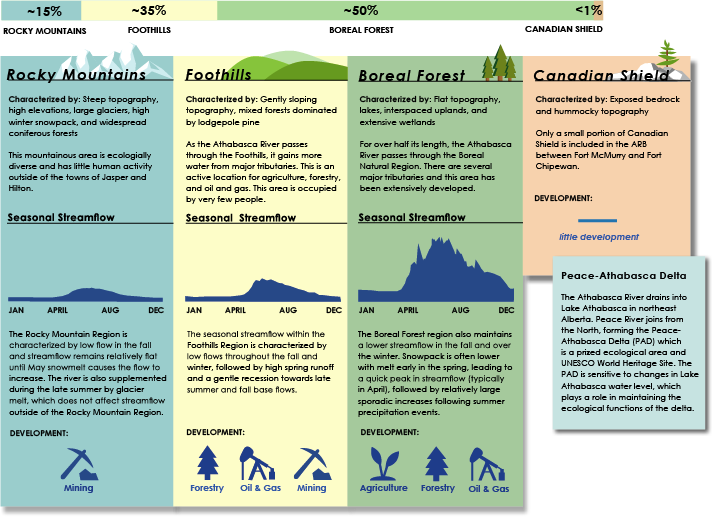The Athabasca River stretches 1,500 km from the Columbia Icefield in Jasper National Park to the northeastern corner of Alberta and into western Saskatchewan. Characterized by diverse regions, the Athabasca River Basin (ARB) is unique in natural resources, ecology, climate, and development. The Athabasca River connects these regions as it flows through the river network, creating the ARB.
The Natural Regions in the ARB include the Rocky Mountains, Foothills, Boreal Forest, and Canadian Shield. Over half of the ARB is part of the Boreal Forest region, while only <1% is part of the Canadian Shield region.
Potential changes in future climate poses a challenge for water management in the ARB as snowmelt timing is expected to shift substantially in the future, resulting in longer snow-free periods. Other possible outcomes could include:
Overall, the hydrological regime of the ARB is likely to be very different from the last several decades. However, thoughtful water management planning can help ensure environmental, social, cultural, and economic effects of changes in climate are not exacerbated by human influence.

The ARB has historically attracted settlement and development and represents a rich and diverse ecological heritage. The natural attributes are important to the region’s identity, which has driven the development of policy and legislation to provide the broader context and necessary frameworks for water management in the basin.
We provide Canadian educational resources on water practices to promote conservation and sustainability. Our team crafts current and relevant content, while encouraging feedback and engagement.
The Canada WaterPortal is a registered charity, #807121876RR0001
We recognize and respect the sovereignty of the Indigenous Peoples and communities on whose land our work takes place.
© 2025 All Rights Reserved.